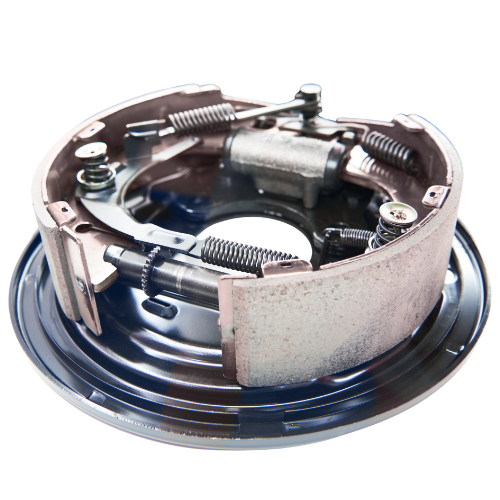Explore the four key components that make up a truck’s brake system—engineered to ensure safe, reliable, and powerful stopping performance on every road.

For fleet operators, truck drivers, and mechanics, knowing when and how to replace a brake chamber is essential for maintaining road safety and preventing costly repairs. This guide provides a step-by-step approach to replacing brake chambers in trucks, along with tips for selecting the right replacement and ensuring long-term durability.
1. What Are Brake Chambers and How Do They Work?
A brake chamber is a round, metal canister that houses a flexible diaphragm, return spring, and pushrod. It works by using compressed air to push against the diaphragm, moving the pushrod and activating the slack adjuster, which in turn applies the brakes.
Types of Brake Chambers
Pro Tip: Brake chambers should always be replaced in pairs to ensure balanced braking performance.
2. Signs That a Brake Chamber Needs Replacement
Brake chambers do not last forever. Here are some common signs indicating they need replacement:
✔ Air Leaks: A hissing sound from the brake chamber suggests an air leak, leading to reduced braking efficiency.
✔ Slow Brake Response: If the truck takes longer to stop, the diaphragm inside the brake chamber may be failing.
✔ Visible Corrosion or Cracks: Rust, cracks, or physical damage can weaken the chamber’s structure, increasing the risk of failure.
✔ Weak Parking Brake Hold: If the parking brake does not hold properly, the spring brake chamber may be worn out.
✔ Air Pressure Drops Rapidly: A failing chamber can cause unexpected pressure loss in the air brake system.
3. Tools and Equipment Needed for Brake Chamber Replacement
Before starting the replacement, gather the necessary tools:
Safety First: Since spring brake chambers contain a high-tension spring, improper handling can cause injury. Always cage the spring before removal.
4. Step-by-Step Guide to Replacing a Brake Chamber
Step 1: Park the Truck and Secure the Vehicle
Step 2: Identify the Brake Chamber Type
Step 3: Cage the Spring Brake (If Applicable)
Step 4: Disconnect the Air Lines
Step 5: Remove the Old Brake Chamber
Step 6: Install the New Brake Chamber
Step 7: Reconnect the Air Lines
Step 8: Release the Caging Bolt
Step 9: Test the Brake System
5. Choosing the Right Replacement Brake Chamber
When selecting a new brake chamber, consider the following factors:
✔ Size and Stroke Length: Ensure the new chamber matches the specifications of the old one.
✔ Type (Service or Spring Brake): Use the correct type for the application.
✔ Material Durability: Look for chambers with corrosion-resistant coatings to extend lifespan.
✔ Certified and Tested Components: High-quality brake chambers meet SAE and IATF16949 certification standards, ensuring reliability and safety.
Pro Tip: Investing in premium-quality brake chambers reduces long-term maintenance costs and enhances braking performance.
6. Maintenance Tips for Extending Brake Chamber Lifespan
To maximise the lifespan of your truck’s brake chambers, follow these best practices:
Fact: Regular maintenance can extend the life of a brake chamber by up to 50%, reducing downtime and repair costs.
7. FAQs About Brake Chamber Replacement
Q1: How often should brake chambers be replaced?
Brake chambers typically last 3 to 5 years, depending on usage, road conditions, and maintenance quality.
Q2: Can I replace only one brake chamber at a time?
It’s recommended to replace them in pairs to maintain even braking performance across the axle.
Q3: What happens if a brake chamber fails while driving?
A failed chamber can cause uneven braking, longer stopping distances, or a complete brake lockup. If you suspect failure, stop immediately and inspect the system.
Q4: Can I replace a brake chamber myself, or should I hire a mechanic?
If you have mechanical experience, you can replace a brake chamber yourself. However, due to the high tension in spring brakes, it’s safer to consult a professional if unsure.
Q5: Are all brake chambers universal?
No, brake chambers come in different sizes and configurations. Always match the new chamber with your truck’s specifications.
Conclusion
Brake chambers play a crucial role in a truck’s braking system, ensuring safe and efficient stopping power. Regular inspection and timely replacement prevent potential failures and improve overall road safety.
By following this guide, truck owners and fleet operators can confidently replace brake chambers, ensuring their vehicles remain in top condition. Whether maintaining a single truck or managing a large fleet, investing in high-quality brake components and proper maintenance is essential for long-term performance and reliability.